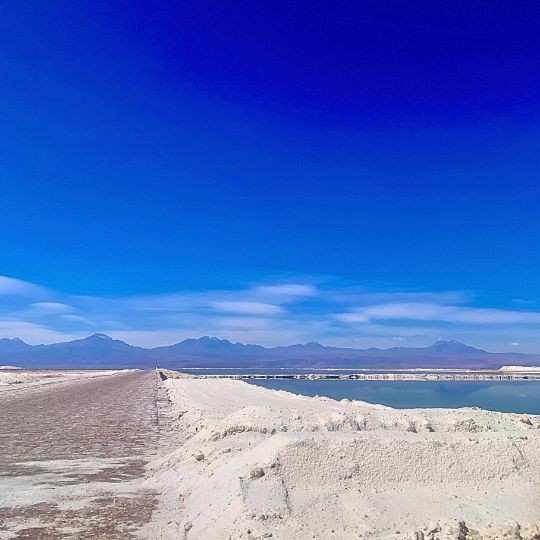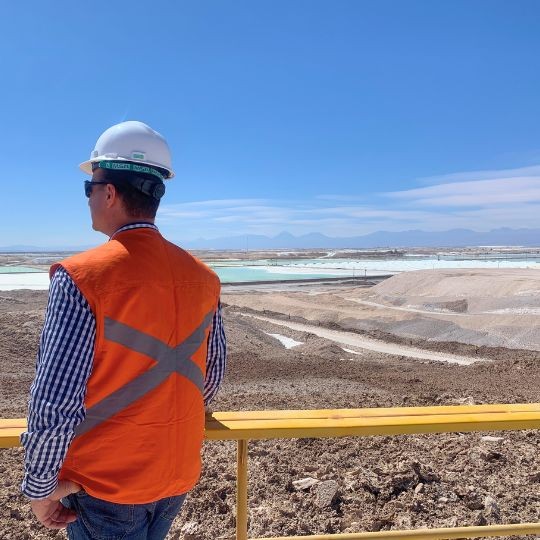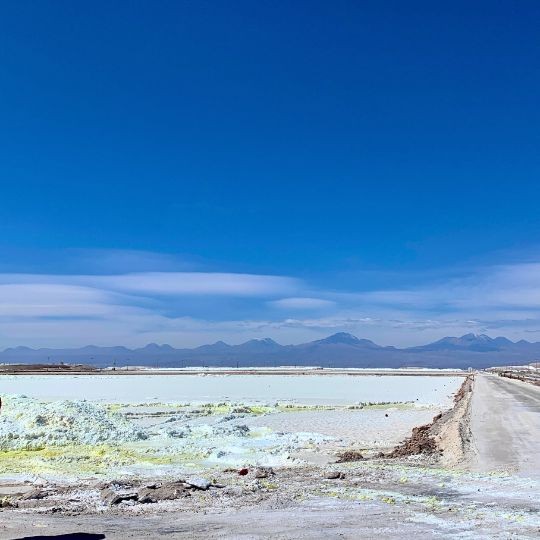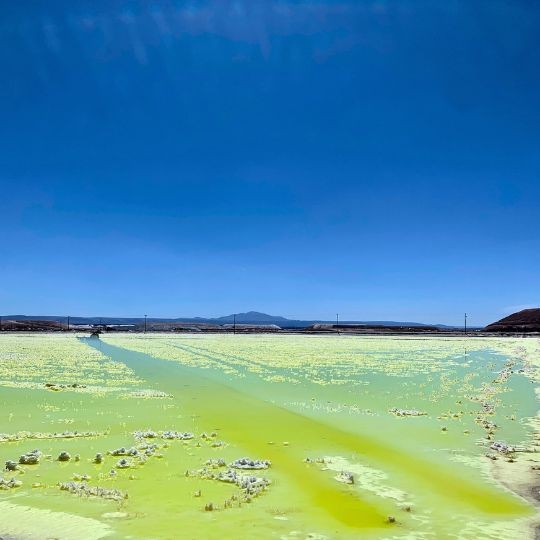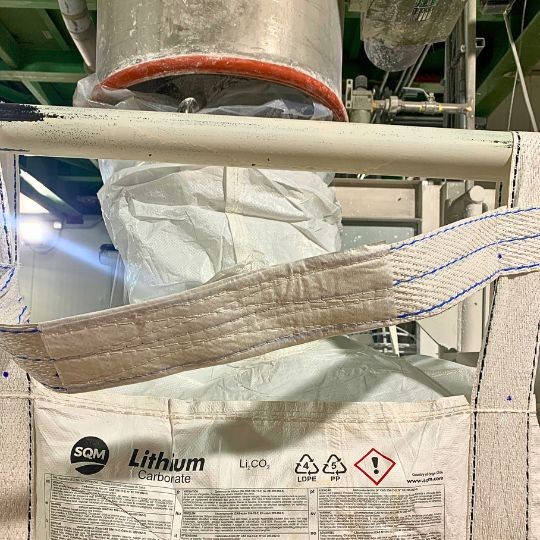A Journey Through Chile’s Lithium Landscape
The Center traveled to the north of the country to get first-hand knowledge on the mineral's extraction and production.
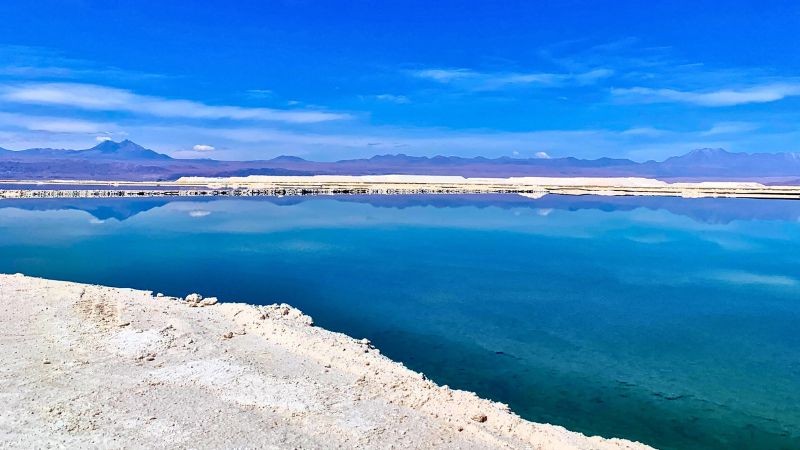
In the realm of global lithium extraction, 21 locations worldwide contribute to the supply, as reported by the British Geological Survey, with a substantial portion originating from an area known as the “lithium triangle” nestled in Chile, Argentina, and Bolivia. This strategic region holds an impressive 54% of the world's lithium reserves, totaling 11 million metric tons of a critical raw mineral that plays a crucial role in the energy transition to net zero. It also serves as an economic catalyst for the countries involved.
Decoding Lithium
Lithium, a versatile chemical element found in nature, fuels diverse applications such as rechargeable batteries, ceramics, glass, and aluminum alloys. Its reach extends even to the pharmaceutical industry, where it contributes to the synthesis of medicines.
In terms of utility, around two-thirds of global lithium is associated with the production of lithium-ion batteries. China leads as the primary consumer, boasting an 80% share in battery cell manufacturing capacity. Yet, other regions with robust automotive and electronic industries emerge as significant consumers, underlining the indispensable role of lithium-ion batteries in consumer electronics and electric vehicles. The quest to reduce carbon emissions globally hinges on the proliferation of these rechargeable batteries powering the electric vehicle revolution.
Chile and the Lithium Landscape
Within the “lithium triangle,” Chile has the world's largest lithium reserves (36%) and is the second-largest global producer (32%), according to 2020-2021 data from Chile’s Copper Commission (Cochilco).
The Chilean lithium production experienced a threefold increase from 2015 onwards. Simultaneously, external production quadrupled, causing a shift in Chile's market share from 37% to 30% globally. Despite this adjustment, the country remains in equilibrium, with its reserves aligning closely with production levels. Notably, its closest competitors in production, especially Australia, remain reasonably distant in terms of reserves. Furthermore, in contrast to copper mining dynamics, lithium production and reserves are significantly concentrated among four primary players: Chile, China, Australia, and Argentina.
CGC in the Field
In Chile, lithium is found in brines at the core of the Atacama Salt Flat, in the desert of the same name located in the north of the country. These brines contain the highest concentrations of lithium and potassium known so far, as well as considerable concentrations of sulfate and boron. There, are located the operations of the world's first and second lithium producers: SQM and Albemarle respectively.
To that part of the country - located 1,600 km north of the capital city of Santiago - members of the Santiago Center’s team, Carla Magri, and Chris Molinari, traveled to get first-hand knowledge of how lithium is extracted, processed and produced. Their mission extended to exploring potential collaborations between Columbia University, the Center, and local stakeholders.
Their expedition led them to SQM's mining operations in the middle of the Atacama salt flat. Here, the company – which produces around 20% of the world’s lithium – has access to brine reserves, which are subsequently pumped into expansive pools where the liquid undergoes evaporation. The residue, comprising significant salt deposits, remains stored on-site due to the impracticality of commercial transport and sale. Approximately 80 truckloads of unprocessed lithium, harvested after the majority of liquid evaporation, embark on a daily journey to the El Carmen processing plant in the coastal city of Antofagasta, about 350 km away.
The team's visit extended to the El Carmen processing plant, providing valuable insights into the chemistry and sustainable practices seamlessly integrated into the production process. A noteworthy aspect is the plant's commitment to environmental responsibility, with nearly all water used in lithium processing being recovered and reused. The plant fulfills half of its industrial water needs through collaboration with the city utility, which redirects its residual water to SQM. Moreover, observing the various stages of lithium processing, from extraction to packaging, underscored the profound significance of this mineral both for the country and the global landscape.
A New Lithium Strategy
In April 2023, the Chilean government presented a National Lithium Strategy, charting a course to stimulate the development of the lithium mining industry, contribute to productive diversification, and propel the country's global leadership in the lithium industry. This strategy is based on four pillars: State participation, the establishment of a public technological and research institute for lithium and salt flats, public-private collaboration, and the respect for existing contracts between the Chilean State and mining companies SQM and Albemarle, which allow lithium exploitation in the Atacama Salt Flat until 2030 and 2043, respectively.
Having gained valuable insights after their journey through Chile's lithium landscape, the Santiago Center’s team look forward to leveraging Columbia University’s and the Center's expertise to facilitate cooperative efforts in research, education, and community engagement to address climate change and environmental challenges through the development of a “Climate Initiative Chile.”
